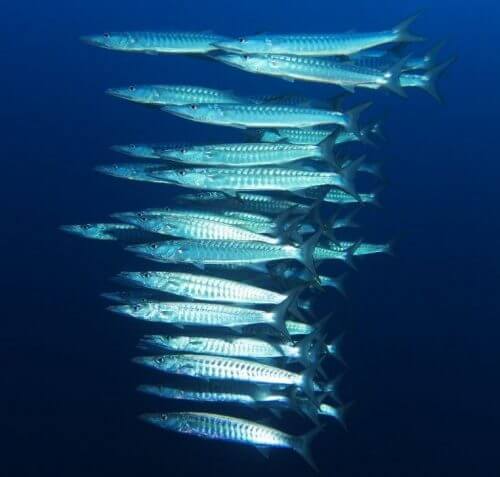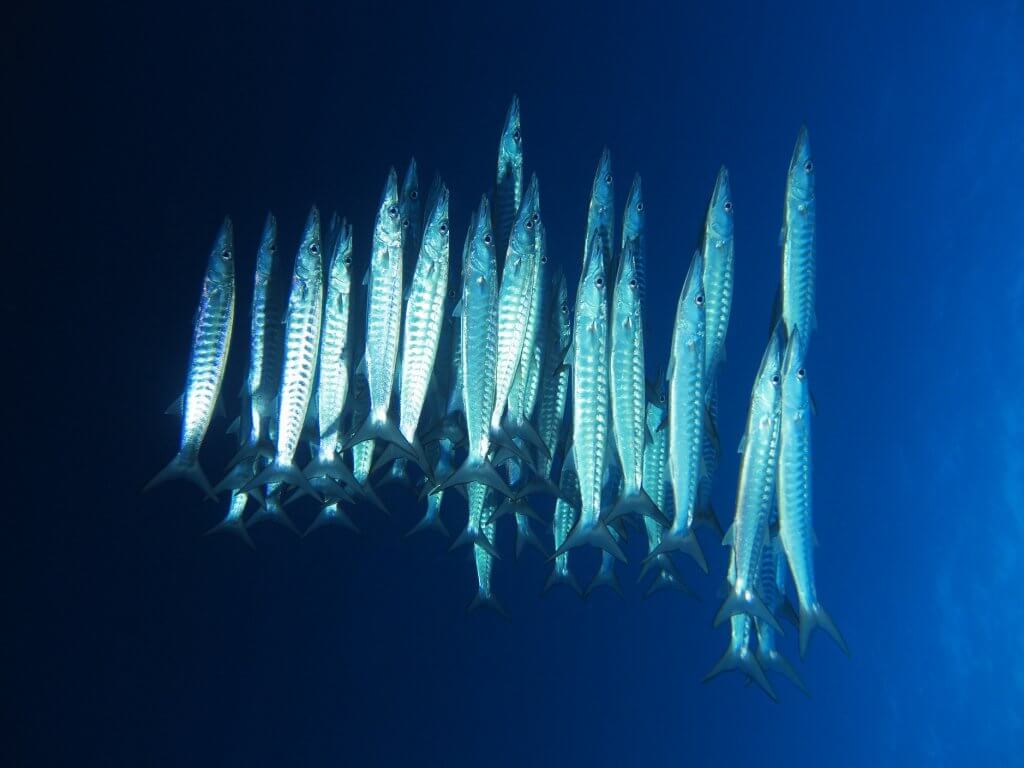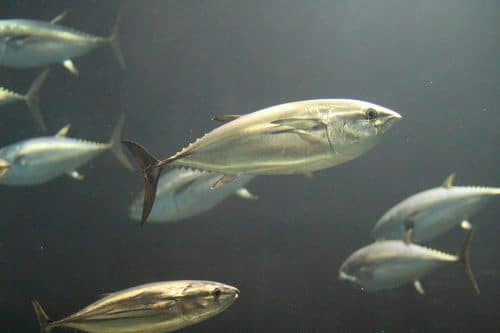A new study warns that due to global climate change, the size of many fish around the world is expected to decrease by about a third - including in the Mediterranean Sea

By Edva Ofir and Likson, Angle, Science and Environment News Agency
It's not easy being a fisherman. Not only is it aboutOne of the most dangerous professions in the world, but according to estimates this is one of the professions Humans are expected to be replaced by robots. If all this is not enough, the fish they take out of the water are also getting smaller and smaller (and the economic profit is also reduced).
In 2014 it was published A study that confirmed the great fear of the fish merchants in the North Sea, the fish are indeed smaller than before and the reason for this is the climate change which also causes the warming of the sea water. If the assessment is not enough, if overfishing continues at the current rate, By 2050 there will not be enough fish left in the sea to allow the continued existence of commercial fishing, After all, the size of many of the marine animals with gills such as sharks, fish, lobsters and squids (calamari) is getting smaller significantly due to the warming of the water in the last forty years.
Now, A new study by researchers from the University of British Columbia in Canada Trying to explain why the warming of the water is a major factor in this phenomenon of marine animals trying. According to the research, the warming of the sea water causes two processes that harm the breathing of the fish: the first, as the sea water warms, it can contain less dissolved gases in general and oxygen in particular. The second process is that the oxygen consumption of the fish increases as the temperature of the water in which they live increases.
The accumulation of greenhouse gases is a major factor in the warming of the earth and the oceans and, consequently, in the lack of oxygen for the animals with gills. The main reason for this is that the body temperature of most fish is affected by the ambient temperature and therefore an increase in the water temperature increases their body temperature and with it also the rate of metabolism in their body. This increase in metabolic activity increases the oxygen consumption of the fish. An increase in oxygen consumption occurs naturally as the fish's body grows throughout their life. The increased metabolic rate as a result of the rising temperature of the sea (which now contains less oxygen) creates an excessively high demand for oxygen, a demand that the fish's respiratory system cannot meet.
According to the researchers, a decrease of 30-20 percent in the size of marine animals of many species is expected, if the trend of increasing water temperature continues. The expected increase of two degrees Celsius in the temperature of the oceans by 2050 will lead to a 30 percent decrease in the size of one of the most commercial fish - the tuna. This fish consumes a lot of oxygen because it is very dynamic and fast. Sharks are also expected to be affected in size by the increase in water temperature, as are herring, sole, cod and many populations of other marine animals.
In order to reduce the damage to the size of the marine animals, the researchers suggest formulating a fishing policy that prevents overfishing, another major factor in the attempts of the fish (because the fishing nets are adapted to capture the larger individuals, while small fish that have not yet reached commercial size can pass through them and escape), and Steps to promote the Paris Agreement on climate change which seeks to lead to a significant reduction of greenhouse gas emissions.
Blue-white-small
The fishing situation in the Mediterranean is quite problematic. According to the Lakes and Seas Research Institute in recent years There was a decrease of half of the loot that was plucked from the water. In addition, a report published by the institute shows that In the last three decades, the surface water in the eastern Mediterranean has warmed by three degrees, at a rate of 0.1 degrees per year on average. Today, the water in the eastern Mediterranean reaches an unprecedented record temperature of 31.5 degrees in the summer.

Indeed, the populations of many native species in the eastern Mediterranean have been damaged due to various reasons such as Migration of hundreds of invasive species From the Red Sea through the Suez Canal, which compete with the local species for food sources and habitats as well as the destruction of habitats, water pollution, water acidification (increase in seawater acidity caused by the increase in the concentration of carbon dioxide in the atmosphere that dissolves in seawater) and overfishing. The warming of the water increases the sensitivity of marine animals to these risks. for example, The local sea urchin has difficulty surviving in a water temperature that exceeds 30.5 Ma'alot and almost disappeared from our area, although it was common here in the past.
Dr. Oren Sonin, fisheries researcher and manager of the fisheries department in the Fisheries Division of the Ministry of Agriculture and Rural Development previously published a study that examined whether it actually occurs in the Eastern Mediterranean Experimentation phenomenon in fish, by comparing the size of the fish between Israel and Sicily. Dr. Sonin says that "according to the data of his research, in the first year of their life the Israeli fish were bigger, but then the Sicilian fish were bigger. The reason for this lies in the breeding strategy in extreme living areas like the one in our region. When there is environmental uncertainty, animals invest their best energy to reach reproductive size and sexual maturity as quickly as possible and produce offspring. The water in the Eastern Mediterranean region is saltier and warmer and this leads to the phenomenon of the fish in our region trying."
"The Eastern Mediterranean is an area of high ecological complexity, rich in biodiversity. "The sea water in the eastern Mediterranean is very poor in nutrients (nutrients) compared to the western Mediterranean and in relation to many regions of the world and became even poorer with the damming of the Nile, which was a significant source of nutrients in the eastern Mediterranean, by the Aswan Dam in the middle of the last century," says Dr. Adi Levy Marine biologist and the scientific director of the Israeli Association for Ecology and Environmental Sciences. "This state of the sea water has an effect on the entire food web in our region and the availability of food for the fish populations. In addition, the rapid rate of change in our region, which includes a significant warming and salinization of the sea water together with the infiltration of hundreds of migrant species from the Suez Canal, are also factors that are harmful to the local fish population. As the sea water warms, it contains less oxygen and its high temperature increases the metabolism of the fish and increases their oxygen consumption."
According to Levy, this combination of factors apparently leads to reproduction at a younger age, which is accompanied by the cessation of growth and creates fish with a relatively small body size for those fish species. In addition, over-intensive fishing in our region in recent decades, which took out the largest fish from the sea, can also produce selection in the direction of a smaller body size." "Apparently" says Levy, "the situation observed in our region is due to a combination of a variety of factors that ultimately affect the size of the Middle Eastern fish and this situation is expected to worsen in the future."
We will also try on land
So will only the fish become smaller over the years? To answer this, you need to get out of the water and examine the situation on land: A study by a team of researchers from the University of New Hampshire that was recently published found a phenomenon of gnawing also in the remains of the teeth of mammals such as ancient horses and ungulate mammals. According to the study, this increasing promiscuity is related to evolutionary changes following significant climate changes that occurred over 50 million years ago. During this period, the temperatures on Earth rose: first by eight degrees (about 53 million years ago) and then by about three more degrees.
However, the changes that occurred in the Earth's temperature over 50 million years ago occurred over a period of about ten thousand years, as did the accompanying changes in the size of the animals, while the changes occurring now in the Earth's temperature are occurring at a hundred times faster speed. Therefore, the effects on the animals, on land and at sea, are expected to be much faster and more extreme and will make it very difficult for them to adapt to the new conditions.

One response
And maybe the possibility that smaller fish will escape through the enlarged holes in the fishing nets, is what causes adult fish with a small adult size to survive better?
In any case, they violate the next generation before the little ones have enough time to grow/develop an advantage..